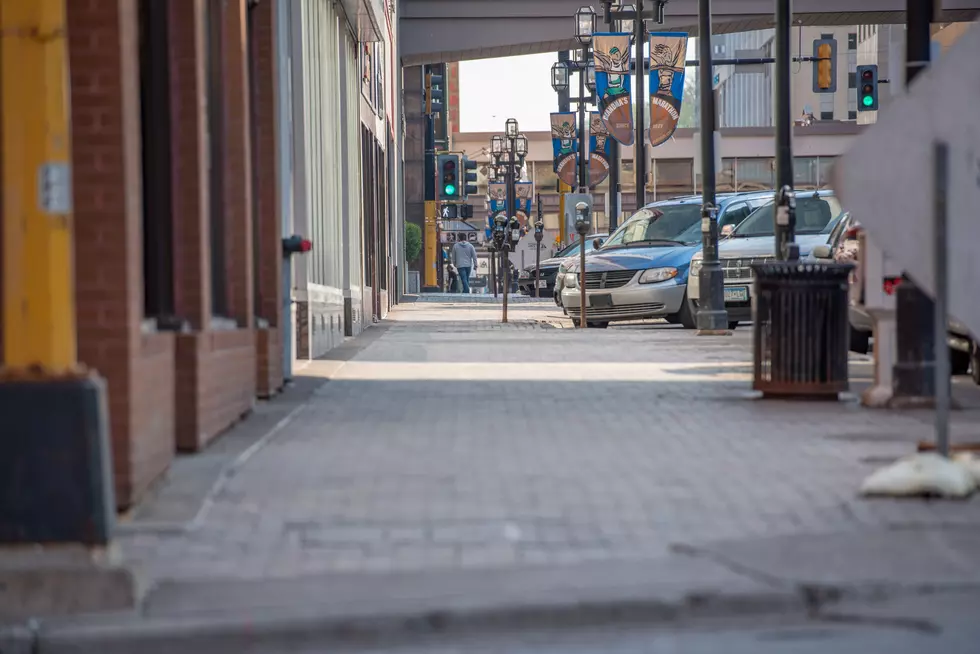
City Leaders Offer Plan To ‘Fix’ Downtown Duluth Problems, Taskforce Results Provide Action Plan For The Future
The problems in downtown Duluth are hard to ignore. Blight. Crime. Drugs. Homelessness. While these have always been issues for the downtown business community, it seems that - for a variety of reasons - they've gotten worse over the last few years. And the pandemic didn't help.
To address the problems - as well as the calls for action from the business community and the general public - Mayor Emily Larson commissioned a Downtown Taskforce recently to look into the situation. They were also charged with providing suggested solutions to protect the investments made in the downtown business district.
During the 2022 State of the City address on March 29, Larson "put a stake in the ground" - saying that "our downtown is too special to allow for any erosion of progress and growth".
Fifteen leaders from the city and the business community - invested partners if you will - served on the taskforce. Mayor Emily Larson was one of the members. Since convenining, they've spent the past half a year reviewing and planning for suggestions and recommendations on four key areas for the downtown area:
- Safety
- Activation
- Vision
- Investment
Nine meetings were held over a five month period. In addition to their own collective insight, they sought consultation with experts - some of who had ties to the area.
At a public session on November 1, the Downtown Taskforce presented their findings and their recommendations to the community. Part of that presentation was an 18-page "Report and Recommendations" document that will be used to guide the process of revitalizing downtown for the future.
Most of the observations that the taskforce made deal with rising crime levels in the downtown area. According to the collateral document, "calls for service" to the downtown area were up significantly over the course of the last year. In fact, the Duluth Police reported that service calls to downtown were up 28% during this year (2022) already. They also report an increasing number of what are called "proactive calls" - which are advance "problem solving" situations that occur in advance of an actual crime being committed.
So what are the recommendations from the taskforce for downtown Duluth? The full report is available to read but here is a general summary:
Safety
- Addition of a City prosecutor and prioritizing filling vacant police positions
- Increasing the focus on chronic offenders and hold them accountable
- Continuing the embedded outreach worker within the downtown Duluth organization
- Prioritizing and enhancing mental health response
- Lobbying for an increase in chemical and mental health services and beds in the state of Minnesota
- Clarifying panhandling expectations
- Strengthening coordination to address encampments
- Quarterly public safety meetings
- Sharing of police strategies for the downtown
- Providing downtown stakeholders with clear expectations of community rights and roles
- Lighting dark areas, alleys, and facades and better identifying problem areas within the downtown
- Increased criminal justice system focus on downtown
- Residential strategy to intervene for high risk and high need community members
- Addressing critical housing needs
Activation
- Increased focus on intentional design
- Establishing lighting and storefront improvement incentive program for business and property owners
- Establishing a downtown activation grant fund
- Identifying important times of movement and circulation in the downtown
- Increasing communication and establish a neighborhood watch program using block captains, employers, and nonprofit partners
Vision
- Aggressively target vacant buildings, blight, and graffiti within downtown
- Assessing the skywalk system
- Completing and implementing a new Downtown Plan
- Commissioning a new Housing Study for our downtown
- Evaluating the true need for parking
Investment
- Continuing to prioritize economic and business development
- Addressing ongoing permitting concerns
- Prioritizing housing development at all levels
Throughout the report, a variety of items reappear a number of times; some of these are problems that need to be addressed while others represent conditions and elements that affect perceptions and realities. They include:
- The pandemic
- Shopper's Ramp
- Rising levels of mental illness
- Panhandling
- Homelessness
- Drugs
- Road construction - including numerous multi-year projects near downtown
- Staffing concerns
- Parking
- Housing
Again, the full report released by the Downtown Taskforce is available online. It makes an interesting read and provides insight into what Twin Ports residents can expect to see (and depend on) in the future.


